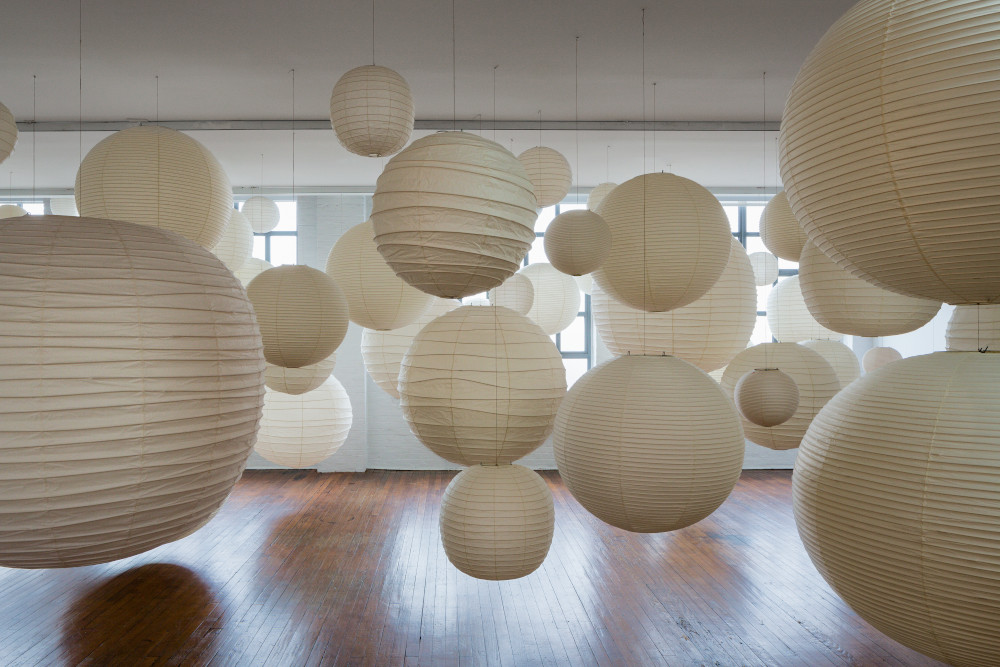Akari
 Isamu Noguchi, Akari Light Sculptures. © The Isamu Noguchi Foundation and Garden Museum, New York / Artists Rights Society
Isamu Noguchi, Akari Light Sculptures. © The Isamu Noguchi Foundation and Garden Museum, New York / Artists Rights Society
Noguchi believed in a model of progress wherein one moves towards the future by looking to the past. In 1951, he began producing light sculptures based on traditional handmade Japanese paper lanterns, regarding his new creations as “a true development of an old tradition.” He called them Akari, a Japanese word meaning “light” in the sense of both illumination and weightlessness. Adding electrical bulbs and experimenting widely with the shape of his Akari, Noguchi reimagined the paper lantern as an art form with profound relevance, use, and beauty in the modern age. As much as Akari are meant to express a sense of legacy and tradition, Noguchi also appreciated their transitory character. He explained, “The quality is poetic, ephemeral, and tentative. Looking more fragile than they are Akari seem to float, casting their light as in passing. They do not encumber our space as mass or as a possession; if they hardly exist in use, when not in use they fold away in an envelope. They perch light as a feather, some pinned to the wall, others clipped to a cord, and all may be moved with the thought.”
